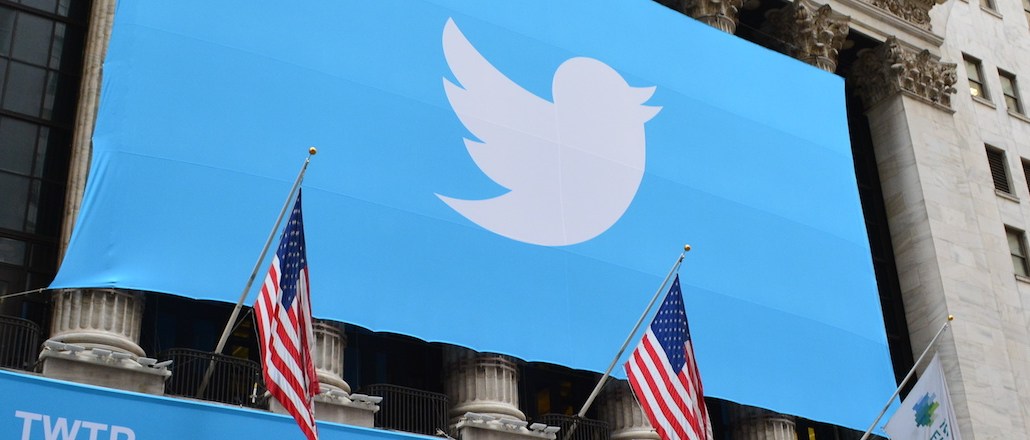Save 50% on a 3-month Digiday+ membership. Ends Dec 5.

The inevitable is nearer than we thought: Twitter is looking to introduce an algorithm-driven feed in 2015, the implications of which could be profound for the service’s advertisers and users.
Twitter has long hinted that it would one day display tweets algorithmically. (Currently, Twitter users only see tweets from accounts they follow and in reverse chronological order.) But Twitter CFO Anthony Noto said on Wednesday that an algorithmic feed is indeed one of several changes to be implemented over 2015.
Arranging tweets based on time “isn’t the most relevant experience for the user,” Noto said at the Citi Global Technology Conference in New York. The solution: “An algorithm that delivers the depth and breadth of the content we have on a specific topic and then eventually as it relates to people,” he said.
Noto emphasized that this change will be gradual, but that has not allayed hand-wringing among Twitter power-users, many of whom view Twitter’s reverse chronological ordering system as integral to the service as its 140-character limit. It’s unclear whether the algorithmic feed will be the default for users, or a separate, opt-in experience — Twitter declined to clarify.
Twitter doesn’t seem to understand why people like Twitter.
— Jamelle Bouie (@jbouie) September 4, 2014
But introducing an algorithmic feed could have an effect beyond indignant users. Brands, Twitter’s main revenue source, rely upon Twitter’s temporal system, too. Indeed, real-time marketing revolves around this very aspect of Twitter.
Here are some of the possible implications of Twitter’s tweak.
Ad position: web_incontent_pos1
User acquisition
The move is primarily a way for Twitter to become more palatable to first-time users and solve its decelerating user growth issue.
“A lot of people don’t use Twitter because they can’t figure it out,” Razorfish’s senior director of social media marketing, Matt Heindl, told Digiday.
One of the more confounding aspects is the constant deluge of information, Heindl added. Sorting tweets algorithmically would theoretically solve that.
“Users are more comfortable with Facebook, which is algorithmic, and this could make them use Twitter more,” he said.
Brands and their audiences
Brands and their agencies have had no shortage of frustration over the past year with Facebook’s news feed algorithm. Brands spent years accumulating Facebook likes and followers with the understanding that those users would always be freely accessible. When organic reach on Facebook declined, brands were then forced to pay for the same level of distribution.
Ad position: web_incontent_pos2
The worry is that brands with large Twitter followings will suffer through the same transition and have to spend more for the same amount of reach.
Heindl said that an algorithm might actually improve Twitter for brands, though. If a Twitter user favorited a tweet from, say, Budweiser on a whim one day but never subsequently followed Budweiser’s account, then an algorithm could serve Budweiser tweets to that user again.
Real-time marketing
Twitter’s temporal nature is, for better or worse, responsible for the rise of real-time marketing in recent years. An algorithm would mean brands would likely have to pay to have their real-time tweets distributed to a certain number of people, Heindl said, even if it’s just $25.
Others are not as quick to leap to that conclusion.
“It’s too early to know what, if anything, this means,” said Matt Wurst, 360i’s social media general manager. “Either way, media [spending] is and will continue to be a critical component of reaching and engaging with consumers.”
Breaking news
Twitter has been, and continues to be, the platform of choice for reporters covering breaking-news stories. Twitter’s influence in this sense cannot be understated: Conversations on Twitter about Michael Brown’s death and the subsequent unrest in Ferguson, Missouri, pushed the story to the national forefront. This was in stark contrast to Facebook where much of the conversation two weeks ago revolved around the ALS Ice Bucket Challenge.
Twitter declined to say how an algorithm will affect how publishers’ stories are distributed.
For-profit tech company that I use for free offends me by changing in a way that isn’t quite the way I like.
— Morgan Clendaniel (@MClendaniel) September 4, 2014
Purists
Platform users are notoriously touchy about feature changes, and that’s especially true for Twitter die-hards. The Twitter features laymen tend to find inscrutable — the @ mentions, the hashtags, the constancy — are precisely the features these purists love so much. (That they are inscrutable to the less tech savvy probably plays a factor, too.)
Twitter would be wise to continue offering users a time- and follower-based feed.
“Twitter was built upon the backs of techies and publicist types. They can’t piss them off,” Heindl said.
But only time will tell if algorithm alarmists will actually leave the platform.
I don’t have an opinion yet on Twitter possibly switching to an algorithmic feed, but I do know folks saying they’ll quit over it are lying.
— Anil Dash (@anildash) September 4, 2014
Image via Shutterstock
More in Media

What publishers are wishing for this holiday season: End AI scraping and determine AI-powered audience value
Publishers want a fair, structured, regulated AI environment and they also want to define what the next decade of audience metrics looks like.

Digiday+ Research Subscription Index 2025: Subscription strategies from Bloomberg, The New York Times, Vox and others
Digiday’s third annual Subscription Index examines and measures publishers’ subscription strategies to identify common approaches and key tactics among Bloomberg, The New York Times, Vox and others.

From lawsuits to lobbying: How publishers are fighting AI
We may be closing out 2025, but publishers aren’t retreating from the battle of AI search — some are escalating it, and they expect the fight to stretch deep into 2026.
Ad position: web_bfu